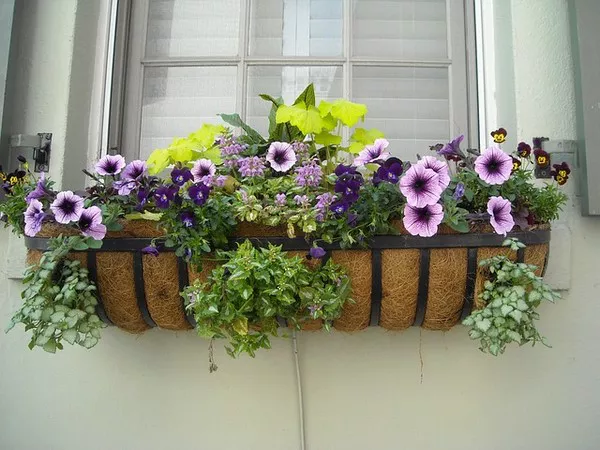Flower pressing is a timeless craft that allows us to preserve the beauty of nature in a delicate and lasting form. Whether you are an avid gardener, a nature enthusiast, or simply someone who appreciates the splendor of flowers, learning how to use a flower press can be a rewarding and creative endeavor. In this comprehensive guide, we will explore the various techniques, tools, and tips to master the art of flower pressing, allowing you to create stunning pressed flower crafts that will stand the test of time.
I. Understanding Flower Pressing
The Importance of Proper Flower Selection
Selecting the right flowers for pressing is crucial to achieve the best results. Choose flowers that are in their prime, free from any blemishes or damages. Opt for flat and thin-petaled blooms, as they tend to preserve their form better during the pressing process. Examples of ideal flowers include pansies, daisies, violets, and ferns.
Timing and Harvesting
Timing is everything when it comes to flower pressing. Harvest your flowers early in the morning when the dew has dried but before the heat of the day causes them to wilt. Flowers at their peak will yield the most vibrant and visually appealing pressed specimens.
Flower Preparation
Before pressing, trim the stems of your selected flowers, removing any excess foliage. Avoid using flowers with thick centers, as they may retain moisture and lead to molding during the pressing process. Gently clean the petals, ensuring they are free from dirt or pests.
II. Different Flower Pressing Techniques
Traditional Flower Press
A traditional flower press consists of two wooden boards and layers of absorbent paper or blotting sheets. To begin, place the flowers carefully on the paper, making sure they do not overlap. Layer another piece of paper on top of the flowers before closing the press and tightening the screws or straps.
Microwave Flower Press
A more modern approach to flower pressing involves using a microwave flower press. This method is quicker and requires fewer materials. Simply place the flowers between two layers of microwave-safe absorbent paper and microwave on low power for short intervals until the flowers are fully pressed.
III. The Flower Pressing Process
Drying Flowers
The primary goal of flower pressing is to remove moisture from the petals while preserving their color and shape. Proper drying is critical to avoid mold growth. Ensure that your flowers are completely dry before beginning the pressing process.
Layering Flowers
Arrange your flowers on the absorbent paper inside the flower press, making sure to space them out to avoid overlap. Place another piece of paper on top of the flowers, and continue layering until the press is full. Avoid overstuffing the press, as this may result in uneven pressing.
Pressing Duration
The duration of the pressing process varies depending on the flowers’ thickness and water content. As a general guideline, most flowers require at least two to four weeks of pressing. Thicker flowers may need additional time. Check the flowers periodically to ensure they are drying correctly and replace the blotting sheets if they become too damp.
IV. Tips for Optimal Results
Temperature and Humidity
Choose a warm and dry environment for flower pressing. High humidity can impede the drying process and may lead to mold growth. Ideally, the room’s temperature should be around 70-85°F (21-29°C) with a humidity level of 40-50%.
Weight Distribution
To ensure even pressure distribution, place heavier flowers or books on top of the flower press. This will help flatten the flowers and prevent curling during the pressing process.
Pre-Pressing
For especially thick or fleshy flowers, consider pre-pressing them by gently flattening the blooms between heavy books or using a flower flattening tool before placing them in the press. This will help speed up the drying process and improve results.
Preservation Spray
After pressing, consider using a preservation spray specifically designed for pressed flowers. This spray helps protect the flowers from fading and preserves their color and shape for an extended period.
V. Creative Uses of Pressed Flowers
Framed Art
One of the most popular uses for pressed flowers is creating beautiful framed artworks. Arrange the pressed flowers in artistic patterns on acid-free paper, and frame them to create stunning wall decor.
Greeting Cards and Stationery
Personalize greeting cards, invitations, and stationery by incorporating pressed flowers into the designs. The delicate and unique touch of pressed flowers adds a special charm to these items.
Resin Jewelry
Create unique and eye-catching jewelry pieces by embedding pressed flowers in resin. From necklaces to earrings, resin jewelry can be a wearable piece of art.
Home Decor
Add a touch of nature to your home decor by using pressed flowers to decorate candles, glass coasters, or even making pressed flower suncatchers.
Conclusion
The art of flower pressing offers a delightful way to immortalize the beauty of flowers and bring the wonders of nature into our daily lives. With the techniques and tips provided in this guide, you can now embark on a journey of creativity and create timeless pieces of art using pressed flowers. Whether it’s for personal enjoyment or as thoughtful gifts, the charm and elegance of pressed flowers are sure to leave a lasting impression on all who behold them. Happy flower pressing!


